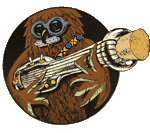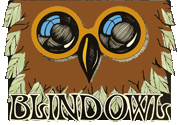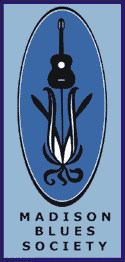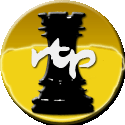|
Look Back To The Future: An interview by Pete Welding
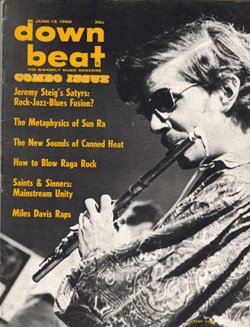 Webmaster’s NOTE: The forward to the article written by Pete Welding was not completely intact in our copy of the interview. We will post the remainder of the introduction at a future date. Thank You for your understanding. Webmaster’s NOTE: The forward to the article written by Pete Welding was not completely intact in our copy of the interview. We will post the remainder of the introduction at a future date. Thank You for your understanding.
…contributions to modern blues scholarship, representing the first important musicological analyses of blues style. Vestine was instrumental in the re-discovery of veteran bluesman Skip James, and most recently participated with Hite in the finding of the one-man blues band Driftin’ Slim.
Canned Heats music is on display in two albums recorded for Liberty Records, Canned Heat (LST-3526) and Boogie with Canned Heat (LST-7541).
The following conversation with the band’s articulate arranger, Al Wilson, took place in Los Angeles shortly before Canned Heat left on its second national tour. -P.W.
* * *
When and under what circumstances was Canned Heat formed?
The first rehearsal was November, 1965. Of the people present at that rehearsal only two remain, Bob [Hite] and me. Within a coupe of months, when we first started doing jobs, we had gone through an intermediate drummer and lead guitarist, and then the third drummer was Frank [Cook] and the third lead guitar was Henry [Vestine]. And we worked for a full eight months with a different bass player named Stuart Brotman, who now plays in the Kaleidoscope. This version of Canned Heat continued through about August, but the situation was different then, and in Los Angeles at least, there was no interest in Blues, and an actual fear of blues music by club owners. We hardly got any work whatsoever and folded up; one of the most ignominious economic failures of the year in the music business.
Then we started again under our new management, which is the key to why we’re being heard now and weren’t before. There’re two factors, one of which is an increased interest in the blues – 40% of the credit goes to that, I’d say – but more than half of the credit would simply have to go to excellent management. John Hartman and Skip Taylor - they saw us, they knew enough about music to realize we were playing in an exceedingly specialized area, but they felt the personality - the “Bear” schtick and all that stuff – would attract enough peripheral interest in the vast amount of the record-buying public that is interested in image and things like that to overcome the relative unpopularity of the blues. They’ve never put any pressure on us to change our music, not once, ever.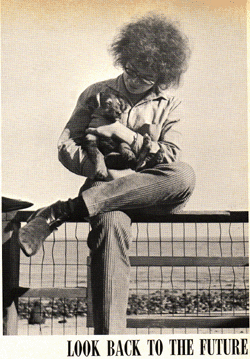
Also, although we didn’t plan it at the time, the “Canned Heat” label was helpful. Of all the young blues bands, Canned Heat is the only title which does not mention the blues. We didn’t plan it that way, but we think this is actually an advantage, because the hip people know we play blues, and there’s no word like blues to scare away the young girls who might look at Bob’s picture on the cover and blow it, and pick up the album. Particularly on the new cover. I really have hopes for the new cover’s helping album sales; I think it’s a really good thing.
Skip & John heard us after we had been out of business for four months. There was one thing of minor interest that happened then that I’d like to relate: it was that Henry and I got involved with another band. We were called the Electric Beavers. What it amounted to was me and Henry, a different rhythm section, vocalist, and horn section of very good guys. It lasted a short time on a rehearsal basis, and we just did Canned Heat arrangements. That’s where we originally got the idea to use horns on those to songs [Marie Laveau and An Owl Song on the band’s second LP]; it was ‘way back then, the tag-end of ’66. We cut some instrumental tracks – there were never any vocals added – with horns on two songs which eventually turned into the ones on the album.
John Hartman saw us in January of ’67 and we signed up in February. At that time it was me, Henry, Bob, Frank, and Mark Andes on bass. Stuart had become committed to Arabic an various other ethnic musics. He wanted to play a wider variety of scales and things like that so he has since worked with ethnic Armenian groups and also the Kaleidoscope, a young group with strong ethnic influences from all over the world. Then Mark Andes joined the group for a couple of months but his interests proved to be in “rock ‘n’ roll,” or whatever it is, and he’s really scored heavily on this new album he put out with the group Spirit. So ultimately the move was best for everyone concerned. Although at the time I regretted the loss of each, it did turn out that everybody wound up doing what they liked the best. And Larry [Taylor], who is the band’s latest bassist, is sure right there in the blues – it’s his interest.
Frank [Cook] decided fairy recently, just before the new album was cut, that his interest was primarily in jazz, and when we began to work a lot he found the blues too restricting. So, the economic question aside, he decided that he would rather get back into the music he was happier with, jazz. And once again it was to the benefit of everyone concerned. He’s working around in jazz groups now, managing, and doing a bunch of things. And our new drummer, Fito De La Parra, is strictly interested in the blue. For the first time we have a situation in which there’s no one whose commitment to the blues is not 100%, or at least 95%, in terms of playing.
What was the intention of the band at the outset?
Toward the beginning, my first thought was to try and combine the two diverse styles of postwar blues: single-string lead guitar, of which B.B. King is the daddy (T-Bone Walker you could argue, but I think B.B. King is the daddy) and Kings Albert, Freddie, and Al, all the Kings and the rest of them – try to combine that thing, which almost exclusively had been done with horns as harmonic background, and add it to the modal-type feeling of the more primitive style of Mississippi-born Chicago guys like Muddy Waters. In other words, basically it was playing Henry against myself in terms of the two-guitar setup. That was the original idea I had. Most of our early arrangements, and this is reflected on the first album, combine thee two factors in the same song, whereas now we have become somewhat more of a blowing band, in person anyway. We still do a few of those older items but we do a lot more improvising now, and some looser structures. This would be like the boogie [Fried Hockey Boogie] on our second album, where everyone takes a solo.
We feel that recording blues can be approached successfully sometimes by using the tricks of the studio – over-dubbing, multitracking, and the like. At first we were very leery of this – except for Larry. He, from the beginning, wanted to do this, and the rest of us were primarily very afraid that it would create a situation of nonspontaneity. What we discovered, however, is that it can actually create more spontaneity because there need be no concern by the soloist that if there’s an excellent rhythm track laid down and his solo is sub-par the whole thing must be junked and done over again. Every aspect can be blocked off one at a time.
Also I find it difficult to argue against a system that allows one person to appear five or six times on a record if necessary. For example, on On The Road Again [second LP] I appear in six different capacities – three tamboura parts, harmonica, vocal, and guitar, all recorded at different times. The tamboura we had to work with was one of the poorest I’ve ever seen; it had no buzzing quality whatever. To put together a good drone it would not have been sufficient to play it once, so to get that buzz-type of drone that is characteristic of the instrument we overdubbed this low-grade tamboura two additional times to create the proper tinkling sensation. If we had done it only once you would have heard individual notes being plucked, which makes for a lousy tamboura drone.
At first I had philosophical objection to playing harmonica at the same time I was singing, because that seemed unreal, but I was prevailed upon to try it and it certainly did come out better. Four Henrys appear on World In A Jug [second LP] at one time. Actually, it’s three Henrys and one of me in certain sections. In this new album, generally speaking, Henry appears both in the rhythm track and the solo. We found that the result was more spontaneous sounding that was the case on the first album.
How has the band changed in the last year-and-a-half? Has your conception changed in any way in that period, aside from the matter of recording techniques?
I think one of the main differences is that we became more concerned with making changes in songs than we used to. Before, we generally would use the lyrics of the original and we wound change the instrumental part around to some degree, but not as much as we would now. And we usually add different words now, too.
How do you select, re-shape, ad arrange the material you use? What criteria do you follow in this?
The unifying factor in many of our arrangements is a commitment to a strongly modal approach. What interests me in my capacity as arranger – I usually come up with the songs and the basic arrangement, like about 50% of them, and then there’s lots of changes made by everyone else – what I’m looking for in starting the arrangements is to utilize any influence or any new sound, but using the modal patterns associated with the blues. This is why, although we use horns occasionally, we wouldn’t consider adding them permanently, or a piano either, because these instruments tend to create a harmonic background which is not what our main interest is.
Let me put it this way: usually in the blues you get really exciting modal singing or instrumental work against a harmonic background, which we think of as the least interesting segment of it. Although we do some standard harmonically-ordered pieces, we try to use a large number of chord progressions other than the ordinary; on World In A Jug [Second LP] we use only two chords instead of the usual three, although it’s 12 measures long; and in Rollin’ and Tumblin’ [first LP] the chord structure is a little different – It follows a delta pattern. Any changes we can do that way, we do, but what we’re mainly interested in is the notes and modes, and then any new sounds that can be created, whether by overdubbing or by other means, such as the way Henry’s changed his sound. He’s totally changed his sound around to create all kinds of different tonal effects on the guitar but with few exceptions it’s all based on those elementary blues scales, with key neutral, or “blue” notes, and like that.
It might be thought by some that it’s reactionary not to use the more modern chords and that our interest in the other things represents primarily an archaic type of thinking. But that is not true, because what we’re interested in is any blues style of any period which relies on the modal feeling of the blues, which is what these old guys did supremely well.
Wouldn’t the playing of modally-organized pieces be much more freeing than the playing of those which are harmonically ordered?
Yes. That’s a key point. There’s a strength and a problem in the modal approach. The strength of it is the intense vocal flavor this will impart to the music, because it must never be forgotten that the blues essentially is vocal and various instrumental simulations of the same. Now, the problems. The obvious one is the repetitional problem You have to draw a fine line between the hypnotic and the merely repetitious. That is the one thing you constantly have to try to overcome – not to fall into repetitiveness. When you use that standard 12-bar progression all night, it can lead to a certain was of thinking which I sometimes call, in respect to certain very fast young guitarists, the methedrine mentality – which is to fill up this ever-recurring, unchanging structure with the mode notes but played with a speed which betrays a lack of concern with the vocal flavor of each note. I’m not saying all fast players do this, but I believe most do. Now, two people I could name who play very rapidly and do not do this, who feel the notes in a very vocal way, would be, on harmonica, Paul Butterfield, and on guitar, Henry. These are the two who come to mind who can do that.
Would you characterize the difference between the older country blues as primarily the older being more committed to a freer, modal approach and the modern (because it is ensemble) adhering to that strict 12-bar, harmonic pattern? Generally speaking, of course.
Yes, and the superiority of certain post-war groups – one might mention Muddy Waters as a good example – is that they did translate non-12-bar things into tightly organized ensemble pieces. Let’s see, Louisiana Blues is one.
Yes, but that’s a 12-bar structure with just three extra beats on the end of each four-bar phrase. It’s recurrent in a regular way each time.
That’s true, but the important thing is that it creates a different spatial thing, also because it does not use the characteristic changes. First of all, it’s AAB, like the standard blues form like we’ve been talking about, but within the AAB what they did was to use other harmonic things than the conventional progression, and to use irregular measures (which recur regularly, so to speak). A perfect example of that is Meet Me in the Bottom by Howling Wolf. All the way through, that’s an AAB song, but it’s on a different set of changes and though the irregularities are the same every time, it creates a different unit of phrase. Mixing these kinds of things up with the standard 12-bar items and then throwing in pure one-chord items can help break up this aspect of methedrine mentality.
Anyway, what I currently think of a lot in preparing arrangements is featuring Henry. Henry basically plays the same notes all the time – very well and with a vocal feeling, and what I try to do, say, on second guitar is to provide a different drone or modal-type harmonic background on each song to add a certain color, to take what Henry does and then add a different underlying color not based on a standard progression but on these partial chords and drone things – to create a different color for each song and then let Henry get it on over that.
How large is the band’s repertoire?
At any given time we usually have 15 to 20 songs ready to play. That’s a little smaller than you might expect, but they’re always changing. As we add new ones to the list, we drop old ones. I think we turn over songs faster than a majority of groups.
Is this primarily to maintain interest?
Yes, for instance, often what we will do upon adding a new item – this is thinking in terms of rhythm guitar; played down the neck with open drone strings, it has a certain color in each key – if we add a new piece, say, a one-chord item in the key of E, the previous one-chord item in E will be dropped and we will play the new one for a period. And the same goes for the key of D; if we learn a new one we might drop the previous one we have in the same key. And then, whenever we can, we try and add totally new colors through new guitar tunings or whatever.
Are there still items from the original repertoire in the book?
Yes, Bullfrog Blues [first LP] is one of them. We’ve played it I don’t know how many countless times, but there’s just something about it that maintains our interest continually. Speaking in terms of the backgrounds, I think that would be a typical example: the background guitar in that, the drone more or less, is based on playing the major continuously and much of the minor in the guitar part, providing a lot of clashes between the minor and major, which creates an interesting drone that the soloist can go over. Now we’ll be doing, particularly in the future, more of this kind of thing on record with the harmonica, when I can have two or three bodies, of which one can pay guitar too. Like, On the Road Again doesn’t have quite the flavor in person it does on the record, because I can only play one of the instruments at any given time.
I imagine that using older blues tunes and adapting them for ensemble style gives the band’s work a freshness that wouldn’t be possible if “standard” items of the modern blues genre were used as repertoire staples. The old songs can serve as points of departure, as vehicles for free expression in the modern style the band has evolved. It could lead to some interesting things, I should think.
Yes. That particularly applies to the earlier phase and only a few songs in the new album, but now we sometimes use an approach that is similar but a little different. This involves the taking of licks, exciting licks, from records which are perhaps not of the highest interest, and putting them into new combinations. It’s still the same process, except that it’s not as tied to the concept of using one song.
Would an example of this be The Story Of My Life on the first LP?
Yes, I guess it would. Yes, that combines ideas from two similar but different recordings, Billy Boy Arnold’s I Wish You Would and Little Millet’s version of the same type of thing – and then adding things that are totally original to that, a combination of factors.
Generally speaking, when we do a song it combines elements of a number of different versions with things added to that which are completely new. On Rollin’ and Tumblin’, for example, the words are from Elmore James’ version, the guitar part takes after various individuals who do it in open-G [tuning], but then it has certain licks in it that are in none of these versions. Elmore’s was in open-D; you see, that creates a different climate of sound than ours or any of the open-G ones. So, it’s different aspects of the various versions that have appeared previously added together with new ideas. I could probably cite five or six songs that would work into our piece The Road Song. The rhythm guitar has a [John Lee] Hooker flavor. The words come from various sources; Howling Wolf, Floyd Jones, and so forth.
Do you feel that the success the band currently enjoys is due to increased interest in blues, or is it attributable to other factors, such as intelligent management, good booking policies, stage presentation, promotion, and such things? Or is it a combination of the two?
I would say it’s about equal. What I said was that 60% of our success was due to the management, which implies a knowledge of the appearance factors, staging and so forth. That’s tied in; in other words, they utilize the appearance factors, and make suggestions. They do make, and we o accept, suggestions concerning the band’s appearance and presentation, matters like that, but they don’t interfere with the music.
Now for the other 40%. I think Butterfield’s East-West album – as Barry Hansen pointed out, and I have to agree with him – was probably the most influential album ever on young “rock” musicians covering a broad spectrum of pop styles. It created a broad-based interest in the blues among many originally interested in the album for the raga thing [the long performance which gives this album its title]. The success of the album seems to have helped the whole blues field out and also, in the other direction, that East-West song appeared to influence a bunch of guys like Jerry Garcia [guitarist of the Grateful Dead] and all of the people who play that way. I think the album, alone, had a tremendous amount to do with popular acceptance of the blues, or at least music labeled as “blues”.
It would appear that the blues market is now large enough to sustain one group at premium prices – Butterfield; maybe four or eight blues bands in a comfortable but lower category – that would be us and a number of other bands such as Junior Wells, Muddy Waters, Jimmy Cotton, and groups like that; then on the third level there’s a vast number of groups who are just getting by, and hopefully the market will expand to include them too – groups who now get occasional jobs, and just scrape by. We’ve had somewhat of a head start on this group of bands because our album was released before nearly all of the others in this third category, and we’ve been together longer. We’re hoping that this new album, particularly with the improved production element, will then widen that bracket to include us, and then in turn create more interest in the blues so that there will be room for more and more groups that can make some money. I honestly fear that the interest in the blues is not likely to last more than a year or two in terms of a broad-based, commercial, people-going-out-and-buying-records type scene. Pop music seems always to go through these phases, but I hope I’m wrong and that in 10 years people will still be buying what we put out.
Is the blues audience distinct from that (or those) for rock, folk-rock, art-rock, and other experimental popular music genres?
Yes, musically and economically. Let’s put it this way: if you go into two homes and in one the first album you see is by Jefferson Airplane, then there is a fairly good chance that you will also find a copy of East-West or another Butterfield album, a smaller chance that you’ll find a Canned Heat album, and the possibility that you’ll find, though this is less likely, a Charlie Musselwhite LP. But if you walk into a house and find a Musselwhite album you can be almost certain there will be a Butterfield album or two, and a far greater likelihood of a Canned Heat album in that other pad. And probably the Airplane album wouldn’t be in that place with Musselwhite’s. That’s why, economically, I think there is a blues-buying public. I think that the people who are exclusively interested in rock would only own Paul Butterfield albums, of those blues LP’s currently available. We hope that the average person with the Airplane record will buy our album too. That’s what we’re hoping for – to get out of the specialized economic area labeled “blues” and into an area of more widespread acceptance.
There is somewhat more overlap with various British Groups. Of course there are very good blues players in England who do not fall into this market because it’s not their preference. I refer to, say, things like the recent Cream album Disraeli Gears, which has two or three strong - at least I thought they were strong – blues selections, but it’s obviously not their main interest. And so these are very good blues cuts that are bought by a large percentage of the people who buy the Jefferson Airplane. And John Mayall – that’s definitely in the more specialized sales area that has not become a chart phenomenon like Eric Clapton [of Cream] or Jimi Hendrix. The blues influence on Hendrix did result in one really neat straightforward blues cut in the British version of his first LP [the selection, Red House, was not issued on the American edition of the Hendrix LP Are You Experienced?] that indicates that he can do more well, but it’s not his interest. I believe the essence of the situation is that these are guys who started out playing the blues and who now prefer to play a blues-influenced music, admitting many other stylistic influences as well. Happily for them (and they certainly are deserving of their popular success – their records are really quality pop items), their new interests proved to be more universally acceptable by what you’d call the rock (that most ephemeral of terms) public.
In what kinds of places does the band work?
There are two or three categories. First, clubs, where you play two or three sets a night for a week, five or six nights. Then there would be the psychedelic emporia, which would include the various places in San Francisco and their imitations elsewhere, such as the Blue Law in Los Angeles. And the third category would be one-night concerts, generally college-affiliated concerts, which we have been playing increasingly lately. Those are the basic categories, in terms of the acoustics and the presentation of material. You can combine the psychedelic halls and the college jobs, because they are played in large places. The psychedelic places generally are more echoey, but they’re basically similar to the college concert halls. In a small club, on the other hand, harmonica and bottleneck (guitar) are at a premium as opposed to lead guitar. Henry, at any rate, prefers and remembers most fondly the jobs we play at large places because then he can turn up [the guitar amplifier] and get those notes to sustain the way he wants without completely shattering eardrums, whereas he has to restrain himself in a small club. On the other hand, the problems of amplifying a harmonica – it’s definitely touch-and-go in the largest places, whereas a small club it’s easier to come up with effective harmonica sound. So our repertoire and what we play does change with the type of hall. We would use fewer harmonica songs in a large location than we would in a smaller club.
Most of these clubs are primarily folk clubs now or have had past histories as folk clubs and have been converted, but there is a small category of places that you associate (in appearance, in what is served and what you pay, and in the general outline of how they run) with folk clubs, except that they have been started recently and have always hired rock bands. But they’re in a minority; most of these places have a folk-club history.
How would you characterize the audiences to which you play?
I would say we get a trifle older crowd than the rock acts, with a higher percentage of knowledgeable people who have a prior commitment to the blues, in college concerts and club dates, perhaps most at college concerts at, say, Eastern schools. There you get really interested, attentive audiences of a large size, whereas in the psychedelic emporia we have a case of more younger people who are more rock-oriented or who go to the place, those more likely to go to the Fillmore than to here the band there. Also at small clubs it varies widely, but certain locations such as the Ash Grove in Los Angeles or the Club 47 in Boston pull in a high percentage of people with a specific blues interest who come to hear the group playing that night and not just go to the Ash Grove or the 47.
|
